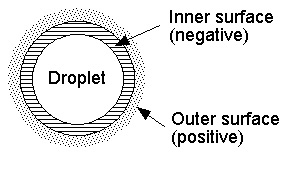Philipp Lenard: Difference between revisions
(Created page with "Written by Nick Padula Living from June 13th, 1831 to November 5th, 1879, James Clerk Maxwell was a Scottish scientist who studied mathematical physics. Maxwell is widely acc...") |
|||
| (14 intermediate revisions by the same user not shown) | |||
| Line 1: | Line 1: | ||
Written by | Written by Vanshika Balayan | ||
Living from June | Living from June 7th, 1862 to May 20th, 1879, Philipp Eduard Anton von Lenard was a German scientist who studied the physics behind cathode rays.[http://www.nobelprize.org/nobel_prizes/physics/laureates/1905/lenard-bio.html] | ||
[[File: | [[File:lenard.jpg|thumb|Philipp Eduard Anton von Lenardl.]] | ||
==Personal Life== | ==Personal Life== | ||
Lenard was a nationalist and a known ant-Semite. He was an active proponent of Nazi ideology and was an important role model for the "Deutsche Physik" movement | |||
===Life and Education=== | ===Life and Education=== | ||
Philip was born in Bratislava (Hungary), on 7 June, 1862. His family originated from Tyrol and were German speakers. Philipp von Lenardis, his farther, was a wine merchant in Pressburg and his mother's name was Antonie Baumann. Philipp attended the 'A Pozsonyi királyi katholikus fögymnasium´, which really had a big effect on him and made him want to pursue the sciences during his tertiary education. He then studied physics and chemistry in Vienna and Budapest in 1880. After receiving his doctorate and working under different scientists for a good bit of time, he moved to the University of Heidelberg in 1907 as the head of the Philipp Lenard Institute. The year 1905 brought him membership to the Royal Swedish Academy of Sciences and 1907 brought him membership at the Hungarian Academy of Sciences. [http://theconversation.com/when-science-gets-ugly-the-story-of-philipp-lenard-and-albert-einstein-43165] | |||
==Work== | ==Work== | ||
=== | ===Photoelectric Findings=== | ||
In 1888, Lenard began his study of cathode rays, which is where he made his biggest contributions. Lenard devised a method that made small metallic windows in the glass tubes that had allowed him to pass the rays emitted from the cathode into the laboratory or into an evacuated chamber. These windows were named "Lenard windows". | |||
The creation of these windows then helped him observe the absorption of the rays. He saw that the absorption of the rays was proportional to the density of the material they were made to pass through. This contradicted the previous notional that cathode rays were some type of electromagnetic radiation. Additionally, Lenard saw that the rays appeared to be scattered by air after a short period of time, thus implying that cathode rays were negatively charged energetic particles. He called these quanta. This helped all physicists realize that electrons are constituent parts of an atom and that atoms mostly consist of empty space. | |||
Lenard's most important observation was that the energy of a cathode ray is independent of the light intensity, but was greater for shorter wavelengths of light. These observations were then further explained by Albert Einstein in what he called the quantum effect. This theory showed that the energy of a cathode ray should be directly proportional to frequency by a factor of Planck's constant, h. | |||
Lenard actually ended up being a skeptic of Einstein's theories. However, he never went against Einstein's explanation of the photoelectric effect. | |||
[[File:cathode.jpg|thumb|A Crooke's tube. The cathode rays travel in straight lines from the cathode (shown on the left) and strike the wall of the tube (shown on the right), which then makes it glow by fluorescence.]] | |||
== | ===Meteorological Findings=== | ||
Lenard was the first person to study the separation of electric charges that accompanies the aerodynamic break up of droplets of water. This is known as "spray electrification", "the waterfall effect", or the "Lenard effect". Lenard conducted studies that explored the size and shape distributions of raindrops. To do this, he constructed a wind tunnel in which water droplets of different sizes cold be held stationary for a short period of time. This helped him recognize that large raindrops are not tear-drop shaped, but are shaped more like a burger bun. | |||
[[File:Lenard-e.gi.jpg|thumb| A water droplet forms an electric double layer. ]] | |||
===Awards=== | |||
Royal Society Rumford Medal- 1896 | |||
Italian Society of Sciences Matteucci Medal- 1896 | |||
French Academy of Sciences Prix La Caze- 1897 | |||
Franklin Institute Franklin Medal- 1932 | |||
Nobel Prize for Physics- 1905 | |||
=="Deutsche Physik"== | |||
Lenard was known as a strong German nationalist. He had a strong distaste for "English Physics" because he believed that it stole its ideas from Germany. He was a strong proponent and a member of the National Social Party. Lenard served as the Chief of Aryan physics under Adolf Hilter. | |||
Lenard's strong belief and proposition for German physics led him to looking at all other physicists and their theories with great skepticism, especially Albert Einstein. His book, ''Great Men in Science, a History of scientific progress'' clearly showed his dislike for certain scientists. He even used to refer to Einstein as the "Jewish fraud" of relativity. | |||
[[ | [[File:Swastika4.jpg]] | ||
==References== | ==References== | ||
1. | 1. http://www.nobelprize.org/nobel_prizes/physics/laureates/1905/lenard-bio.html | ||
2. http:// | 2. http://theconversation.com/when-science-gets-ugly-the-story-of-philipp-lenard-and-albert-einstein-43165 | ||
3. http://www. | 3. http://www.rawstory.com/2015/06/when-science-gets-ugly-the-story-of-philipp-lenard-and-albert-einstein/ | ||
4. | 4. hhttp://www.britannica.com/biography/Philipp-Lenard | ||
5. http:// | 5. http://www.nndb.com/people/441/000099144/ | ||
7. http:// | 7. http://www.einstein-website.de/biographies/lenard_content.html | ||
[[Category:Notable Scientists]] | [[Category:Notable Scientists]] | ||
Latest revision as of 16:19, 4 December 2015
Written by Vanshika Balayan
Living from June 7th, 1862 to May 20th, 1879, Philipp Eduard Anton von Lenard was a German scientist who studied the physics behind cathode rays.[1]

Personal Life
Lenard was a nationalist and a known ant-Semite. He was an active proponent of Nazi ideology and was an important role model for the "Deutsche Physik" movement
Life and Education
Philip was born in Bratislava (Hungary), on 7 June, 1862. His family originated from Tyrol and were German speakers. Philipp von Lenardis, his farther, was a wine merchant in Pressburg and his mother's name was Antonie Baumann. Philipp attended the 'A Pozsonyi királyi katholikus fögymnasium´, which really had a big effect on him and made him want to pursue the sciences during his tertiary education. He then studied physics and chemistry in Vienna and Budapest in 1880. After receiving his doctorate and working under different scientists for a good bit of time, he moved to the University of Heidelberg in 1907 as the head of the Philipp Lenard Institute. The year 1905 brought him membership to the Royal Swedish Academy of Sciences and 1907 brought him membership at the Hungarian Academy of Sciences. [2]
Work
Photoelectric Findings
In 1888, Lenard began his study of cathode rays, which is where he made his biggest contributions. Lenard devised a method that made small metallic windows in the glass tubes that had allowed him to pass the rays emitted from the cathode into the laboratory or into an evacuated chamber. These windows were named "Lenard windows". The creation of these windows then helped him observe the absorption of the rays. He saw that the absorption of the rays was proportional to the density of the material they were made to pass through. This contradicted the previous notional that cathode rays were some type of electromagnetic radiation. Additionally, Lenard saw that the rays appeared to be scattered by air after a short period of time, thus implying that cathode rays were negatively charged energetic particles. He called these quanta. This helped all physicists realize that electrons are constituent parts of an atom and that atoms mostly consist of empty space.
Lenard's most important observation was that the energy of a cathode ray is independent of the light intensity, but was greater for shorter wavelengths of light. These observations were then further explained by Albert Einstein in what he called the quantum effect. This theory showed that the energy of a cathode ray should be directly proportional to frequency by a factor of Planck's constant, h.
Lenard actually ended up being a skeptic of Einstein's theories. However, he never went against Einstein's explanation of the photoelectric effect.
Meteorological Findings
Lenard was the first person to study the separation of electric charges that accompanies the aerodynamic break up of droplets of water. This is known as "spray electrification", "the waterfall effect", or the "Lenard effect". Lenard conducted studies that explored the size and shape distributions of raindrops. To do this, he constructed a wind tunnel in which water droplets of different sizes cold be held stationary for a short period of time. This helped him recognize that large raindrops are not tear-drop shaped, but are shaped more like a burger bun.

Awards
Royal Society Rumford Medal- 1896 Italian Society of Sciences Matteucci Medal- 1896 French Academy of Sciences Prix La Caze- 1897 Franklin Institute Franklin Medal- 1932 Nobel Prize for Physics- 1905
"Deutsche Physik"
Lenard was known as a strong German nationalist. He had a strong distaste for "English Physics" because he believed that it stole its ideas from Germany. He was a strong proponent and a member of the National Social Party. Lenard served as the Chief of Aryan physics under Adolf Hilter. Lenard's strong belief and proposition for German physics led him to looking at all other physicists and their theories with great skepticism, especially Albert Einstein. His book, Great Men in Science, a History of scientific progress clearly showed his dislike for certain scientists. He even used to refer to Einstein as the "Jewish fraud" of relativity.
References
1. http://www.nobelprize.org/nobel_prizes/physics/laureates/1905/lenard-bio.html
4. hhttp://www.britannica.com/biography/Philipp-Lenard
5. http://www.nndb.com/people/441/000099144/
7. http://www.einstein-website.de/biographies/lenard_content.html
